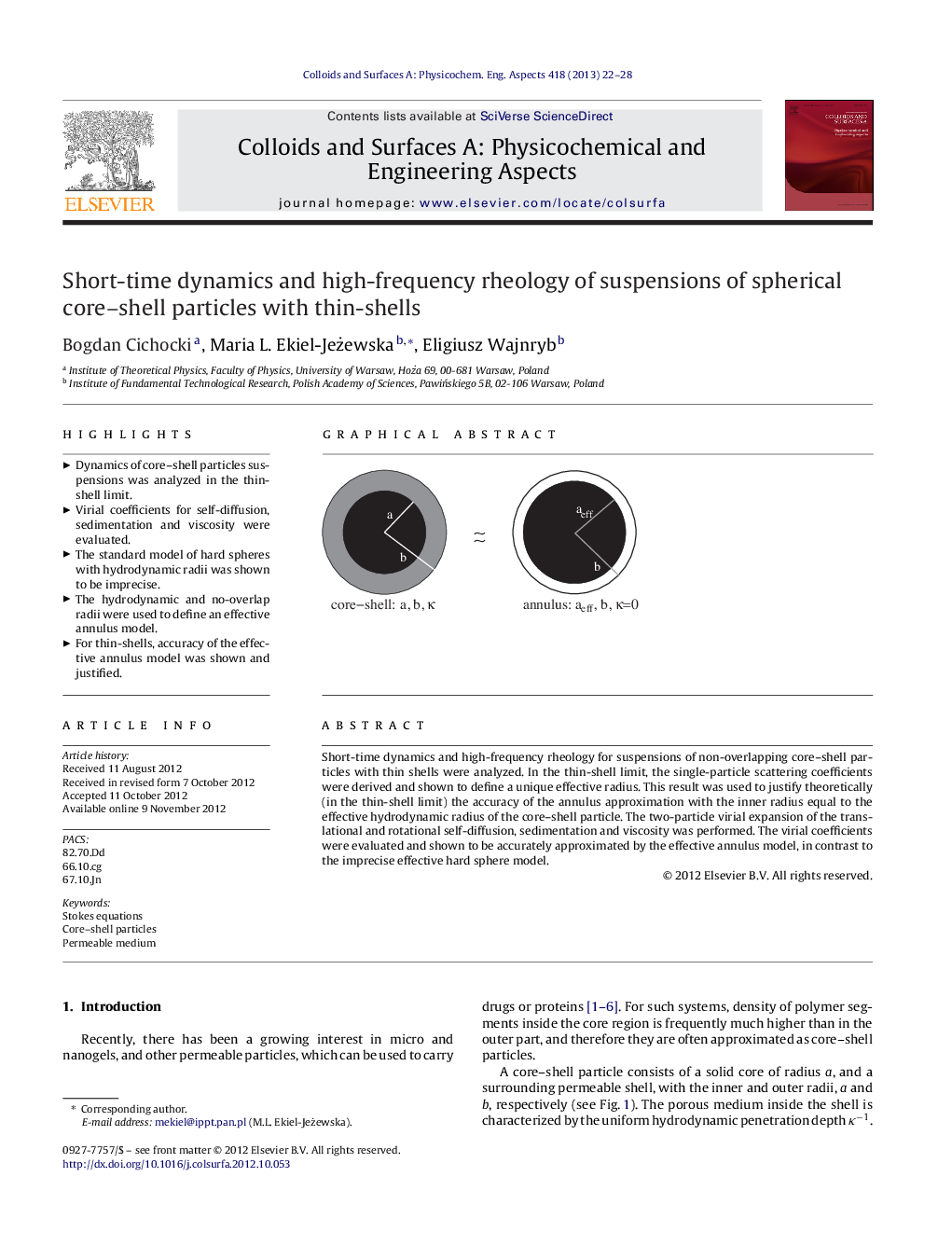| Article ID | Journal | Published Year | Pages | File Type |
|---|---|---|---|---|
| 593846 | Colloids and Surfaces A: Physicochemical and Engineering Aspects | 2013 | 7 Pages |
Short-time dynamics and high-frequency rheology for suspensions of non-overlapping core–shell particles with thin shells were analyzed. In the thin-shell limit, the single-particle scattering coefficients were derived and shown to define a unique effective radius. This result was used to justify theoretically (in the thin-shell limit) the accuracy of the annulus approximation with the inner radius equal to the effective hydrodynamic radius of the core–shell particle. The two-particle virial expansion of the translational and rotational self-diffusion, sedimentation and viscosity was performed. The virial coefficients were evaluated and shown to be accurately approximated by the effective annulus model, in contrast to the imprecise effective hard sphere model.
Graphical abstractFigure optionsDownload full-size imageDownload as PowerPoint slideHighlights► Dynamics of core–shell particles suspensions was analyzed in the thin-shell limit. ► Virial coefficients for self-diffusion, sedimentation and viscosity were evaluated. ► The standard model of hard spheres with hydrodynamic radii was shown to be imprecise. ► The hydrodynamic and no-overlap radii were used to define an effective annulus model. ► For thin-shells, accuracy of the effective annulus model was shown and justified.
